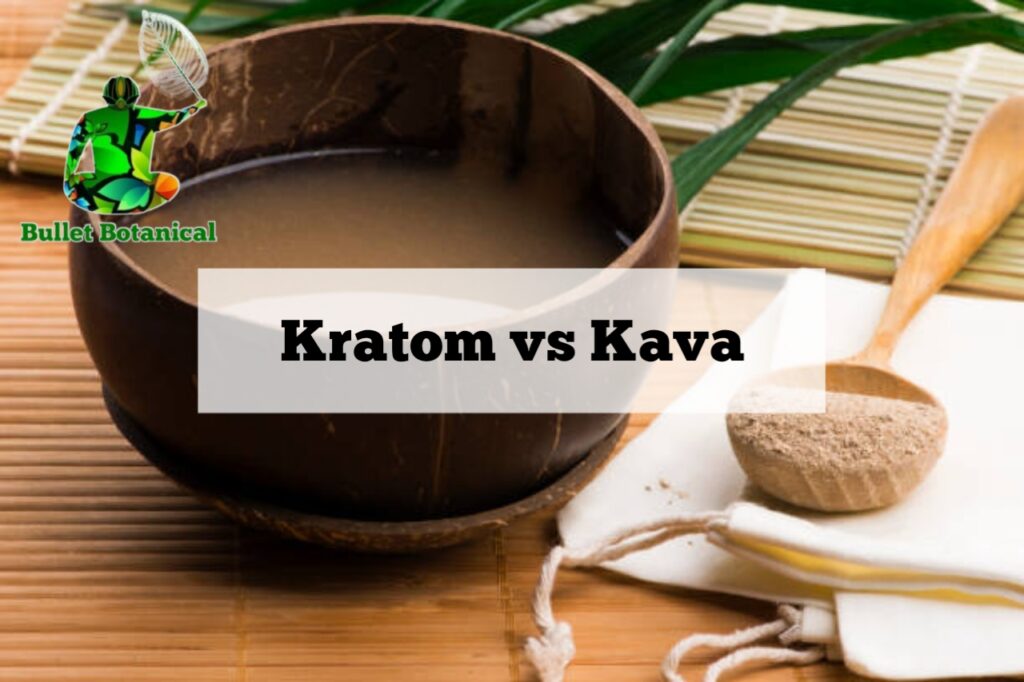
Hey there, valued Bullet Botanical customer! If you’ve been with us for a while, you might have spotted an exciting new item in our catalog recently. We’ve added a product called Kava! But what exactly is it, and how does it stack up against Kratom? In this blog post, we’ll dive into the delightful differences between Kratom and Kava, helping you make the best choice for your needs.
Both Kratom and Kava are natural plants that have been cherished for centuries in various cultures for their medicinal and therapeutic benefits. Although they share similar origins, they each bring something unique to the table. Read on to discover more about their similarities and differences!
As natural remedies gain popularity, Kratom and Kava are emerging as favorites among those looking for plant-based options. While they come from plant sources and may have some overlapping qualities, there are important distinctions that set them apart.
Kratom is a wonderful tree that grows in Southeast Asia, and people traditionally use its leaves to brew a tea that shares some traits with coffee. Known scientifically as Mitragyna speciosa, it has been a supportive herbal companion for indigenous farmers and others who cultivate it. Over the last decade, it has become increasingly popular among health-conscious folks in the West.
On the flip side, Kava extract comes from the roots of a plant that hails from the beautiful South Pacific islands. This plant is called Piper methysticum and has boasted many names over its rich history, including:
As you can tell from its more familiar name, Piper methysticum belongs to the pepper family. In fact, its leaves bear quite a resemblance to those of a bell pepper plant! Kava products are made from extracts derived from its roots.
In general, it’s wise to avoid mixing Kratom and Kava at the same time. While both are derived from natural plants, they have unique chemical compositions that might interact differently in your body when combined. Though there’s some overlap, using them together could increase the potential for side effects or unexpected reactions. Additionally, the typical ways of enjoying Kratom and Kava differ as well. Kratom is commonly taken in capsule or tablet form or brewed into tea, while Kava is usually mixed into a cold beverage.
While Kratom and Kava share similarities, their consumption styles are quite different. The most popular way to enjoy Kratom is by making it into a delicious tea using Kratom powder or leaves and hot water. It can also be taken in capsules or tablets for added convenience. For more details on brewing Kratom tea, feel free to check it out!
Kava, on the other hand, is typically enjoyed in beverage form. Kava is ready for you in both powder and liquid forms, allowing you to enjoy it as a tea or simply mixed with water. You can also blend it into smoothies or juices for a refreshing twist.
In recent years, both Kratom and Kava have been in the spotlight of scientific research, as experts delve into their exciting health benefits. Clinical studies are underway to further explore the effects and safety profiles of these two unique plants. Because they come from 100% natural sources, there’s growing enthusiasm among consumers about their status as safer alternatives to other herbal treatments.
Kratom boasts a fascinating composition of dozens of alkaloids, with mitragynine being the most prominent. This alkaloid is the main active ingredient in Kratom, responsible for many of its effects as it binds to opioid receptors in the brain, resulting in stimulant, sedative, and analgesic properties.
Other alkaloids found in Kratom include 7-hydroxymitragynine, speciogynine, mitraphylline, and more. They likely contribute to the diverse effects of Kratom, though we’re still learning about their specific mechanisms.
The pharmacology of Kratom is a subject of ongoing research, and there’s evidence suggesting it may have potential medical benefits. Remember to consult with a healthcare professional before introducing any supplement into your routine, and always follow the safety instructions that accompany it!
Kava’s effects come from its active components known as Kavalactones, which interact with the brain to produce its soothing benefits. Among the most common Kavalactones are kawain, yangonin, and desmethoxyyangonin, but there are over fifteen recognized Kavalactones in total. Research suggests that Kava may help tackle insomnia, stress, and anxiety, along with possible benefits to cognitive function. Just like with Kratom, it’s always good to have a chat with your doctor before trying any new supplement, and make sure to follow the safety guidance provided.
The legal status of Kratom and Kava can vary by location, so it’s important to check on their legality in your area. In the United States, Kratom remains legal in most states, but it’s currently banned in Alabama, Arkansas, Indiana, Rhode Island, Vermont, and Wisconsin. For further details on the legal standing of Kratom, you can explore more.
Kava is generally legal in most countries and all states in the US. However, it’s always a good idea to double-check with your local governing bodies since laws can change. The FDA has expressed concerns regarding Kava and its potential effects on the body, so, like with many natural products, more research is definitely warranted!

Bullet Botanical, we strive to provide the best quality Kratom. We guarantee our products are lab tested, and if you have any questions, please feel free to contact us anytime.
WhatsApp us